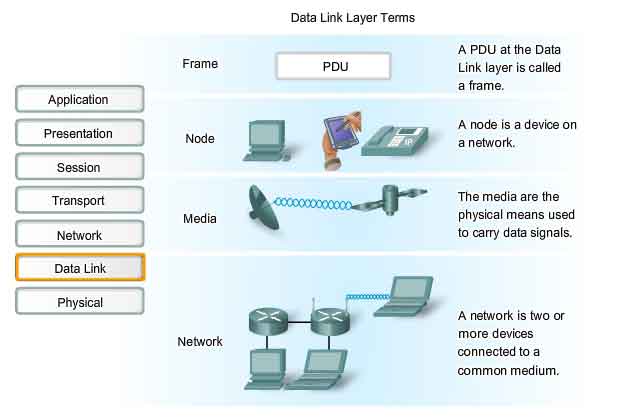First of all, we wil represent the conceptual model that characterizes and standardizes the communication functions of a telecommunication or computing system without regard to their underlying internal structure and technology of every single protocol:
OSI model
The Open Systems Interconnection model (OSI model) goal is the interoperability of diverse communication systems with standard protocols. The model partitions a communication system into abstraction layers. The original version of the model defined seven layers.
1. Physical Layer
The physical layer is the first layer of the OSI Model. The physical layer deals with bit-level transmission and electricity between different devices, and supports electrical or mechanical interfaces connecting to the physical medium for synchronized connection.
This layer plays with most of the network’s physical connections - wireless transmission, cabling, cabling standards and types, connectors and types, network interface cards - as per network requirements. The physical layer does not deal with the actual physical medium (like copper, fiber).
2. Data Link Layer
The Data-Link layer is the protocol layer in a program that handles the moving of data in and out across a physical link in a network. The Data-Link layer is layer 2 in the Open Systems Interconnect (OSI) model for a set of telecommunication protocols.

The Data-Link layer contains two sublayers that are described in the IEEE-802 LAN standards:
- Media Access Control (MAC)
- Logical Link Control (LLC)
The Data-Link layer ensures that an initial connection has been set up, divides output data into data frames, and handles the acknowledgements from a receiver that the data arrived successfully. It also ensures that incoming data has been received successfully by analyzing bit patterns at special places in the frames.
3. Network layer
The Network layer knows the address of the neighboring node in the network, packages transmit with the correct network address information, selects routes and QoS, and recognizes and forwards to the Transport layer incoming messages for local domains. Among existing protocol that generally map to the OSI network layer are the Internet Protocol (IP) part of TCP/IP and NetWare IPX/SPX. Both IP Version 4 and IP Version 6 (IPv6) map to the OSI network layer.
4.Transport layer
OSI Model, Layer 4, provides transparent transfer of data between end systems, or hosts, and is responsible for end-to-end error recovery and flow control. It ensures complete data transfer.

There are five basic protocols for the Transport Layer:
- Transmission Control Protocol (TCP)
- User Datagram Protocol (UDP)
- Datagram Congestion Control Protocol (DCCP)
- Stream Control Transmission Protocol (SCTP)
- Resource Reservation Protocol (RSVP)
5,6,7 - Application Layer Protocols
At the very top of the OSI Reference Model stack of layers, we find layer 7, the application layer. The application layer is the one that is used by network applications. These programs are what actually implement the functions performed by users to accomplish various tasks over the network.
It's important to understand that what the OSI model calls an “application” is not exactly the same as what we normally think of as an “application”. In the OSI model, the application layer provides services for user applications to employ. For example, when you use your Web browser, that actual software is an application running on your PC. It doesn't really “reside” at the application layer. Rather, it makes use of the services offered by a protocol that operates at the application layer, which is called the Hypertext Transfer Protocol (HTTP). The distinction between the browser and HTTP is subtle, but important.
Similarly, not all uses of the application layer are by applications. The operating system itself can (and does) use services directly at the application layer.
That caveat aside, under normal circumstances, whenever you interact with a program on your computer that is designed specifically for use on a network, you are dealing directly with the application layer. For example, sending an e-mail, firing up a Web browser, or using an Skype chat program—all of these involve protocols that reside at the application layer.
There are dozens of different application layer protocols that enable various functions at this layer. Some of the most popular ones include HTTP, FTP, SMTP, DHCP, NFS, Telnet, SNMP, POP3, NNTP and IRC. I describe all of these and more in the chapter on higher-layer protocols and applications.
Twitter: JjAaSsOoNn




Share the News